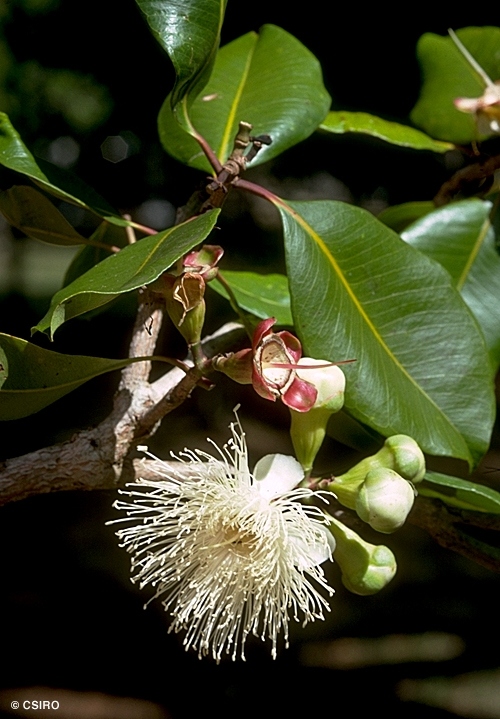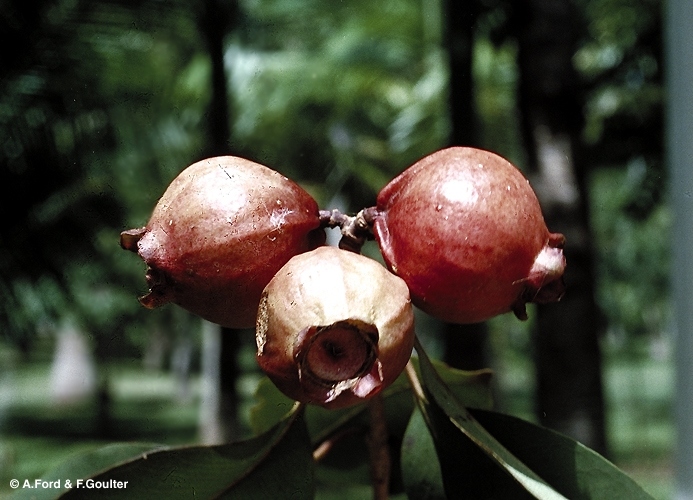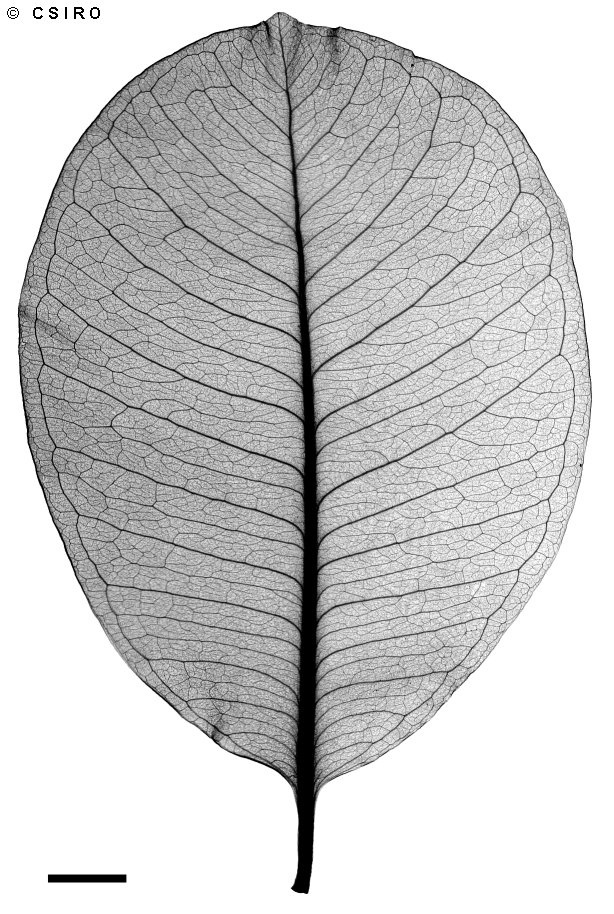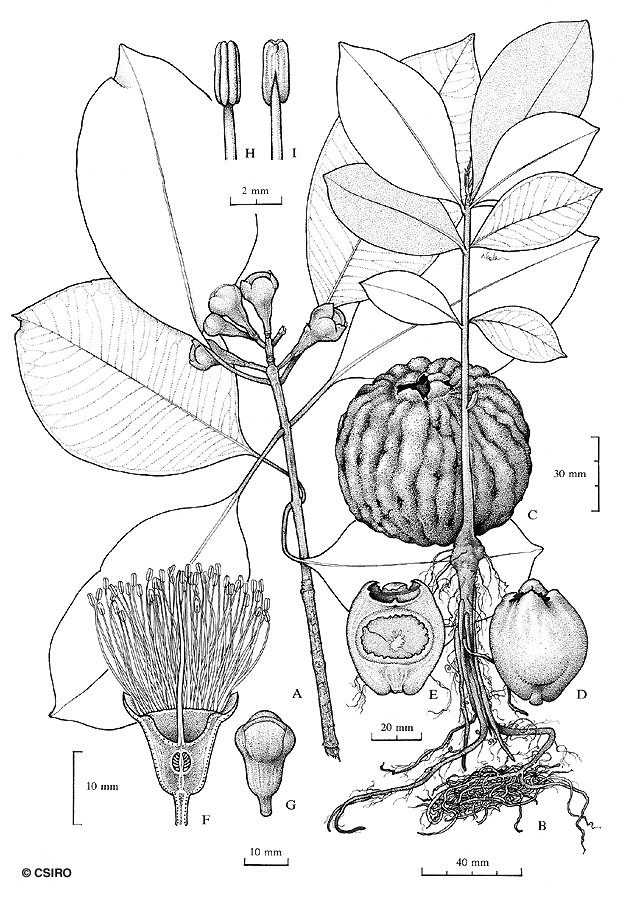Australian Tropical Rainforest Plants - Online edition
Syzygium suborbiculare (Benth.) T.G.Hartley & L.M.Perry







Hartley, T.G. & Perry, L.M. (1973) Journal of the Arnold Arboretum 54: 189.
Rolypoly Satinash; Apple, Red Bush; Watergum; Satinash, Forest; Variegated Apple; Lady Apple; Red Bush Apple; Onionwood; Forest Satinash; Bark in the Wood; Apple, Variegated; Apple, Lady; Satinash, Rolypoly
Sections of bark included in the wood. A thin layer often visible between the inner and outer blaze.
Calyx tube (hypanthium) + pedicel about 14-30 mm long, calyx tube (hypanthium) about 8-18 mm diam., calyx lobes rounded, dimorphic, inner larger, about 6-15 mm long, petals orbicular or oblong about 12-24 x 12-20 mm, oil dots numerous, more than 100 per petal. Outer staminal filaments about 18-45 mm long, glandular, anthers about 1.1-2.1 x 0.4-0.7 mm, gland terminal, near the back of the anther. Ovules about 25-65 per locule, placentas axile, central, ovules radiating, ascending. Style about 20-55 mm long, approximating or exceeding the stamens.
Fruits depressed globular, globular or ovoid, about 30-70 x 35-90 mm, often conspicuously longitudinally ribbed, calyx lobes persistent, about 6-13 mm long. Seed solitary, about 30-55 mm diam., testa free from the pericarp but adhering to the rugose surface of the cotyledons by numerous peg-like intrusions. Cotyledons uniformly textured except for the peripheral layer, stipules small and inconspicuous. Radicle basal or lateral.
Occurs in WA, NT, CYP and NEQ. Altitudinal range from sea level to 250 m. Usually grows in open forest but also occurs in or on the margins of rain forest and in beach forest. Also occurs in New Guinea.
This is a desirable species of spreading habit and provides excellent shade. Large cream flowers are followed by large, pink to red fruits.
This species generally occurs as a small, poorly formed tree or shrub and has no commercial value as timber. Wood specific gravity 0.77. The fruits are edible but of no commercial interest. Hyland (1983).





